A place unlike any other, Congaree National Park may not drive the same traffic as the biggest national park names. But since when has RVing been about following the crowd? Even more importantly, where else can you experience the largest intact expanse of old-growth bottomland hardwood forest left in the Southeast? Here, huge trees with giant knees thrive in a swamp, where muck is so thick that it filters out pollutants. In the early days of summer, there’s a synchronous firefly festival — otherworldly enough to filter out the muck of disenchantment and reawaken your sense of wonder.
Small yet mighty, this national park is a special place. And it’s also less than an hour-long drive of Columbia, South Carolina, making it a very accessible day trip! So, whether you are planning a short summer trip or plotting a longer stay in your RV, here’s what you need to know to RV at Congaree National Park.
Scenic Drives
There are some national parks that are just made for long scenic drives. Unlike it’s Tennessee-North Carolina neighbor, Great Smoky Mountains National Park, Congaree isn’t one of them. Since most of this park is only accessible by foot or boat, there are no designated scenic drives within this park. With that said, the drive in from any direction is quiet, peaceful, and beautiful – especially in the season for those autumn colors!
Must-Hike Trails
The park’s terrain is generally very flat with only slight elevation changes. Congaree National Park lies within a floodplain the size of Maryland, which means that all trails are subject to seasonal flooding. So, be sure to check the park’s alerts page before heading out on any hike. Most trails begin from the Harry Hampton Visitor Center, and the following are some of our absolute favorites — for any difficulty level.
Easy
Boardwalk Trail. This elevated trail meanders through the forest and swamp areas, offering access during higher water. It is wheelchair-accessible, making it a great option for visitors with limited mobility or families with strollers. Distance: 2.6 miles roundtrip
Bates Ferry Trail. Following a historic colonial road, this is a great option for hikers seeking a shorter path out to see the Congaree River. Distance: 2.2 miles roundtrip
Moderate
Weston Lake Trail. This hike provides access to an old-growth cypress-tupelo forest. Following the edges of Weston lake and Cedar Creek, you may see otters and wading birds. The eastern portion of this trail follows a cypress-tupelo slough (dried-up river bed) where many cypress knees can be seen sticking up out of the water. Distance: 4.5 miles roundtrip
Challenging
Oakridge Trail. Passing through a stunning stretch of old-growth forest, this trail allows hikers to explore towering oak trees and cross several small creeks. The number of low-lying sloughs makes this trail great for viewing wildlife like deer and wild turkey. Distance: 7.1 miles roundtrip
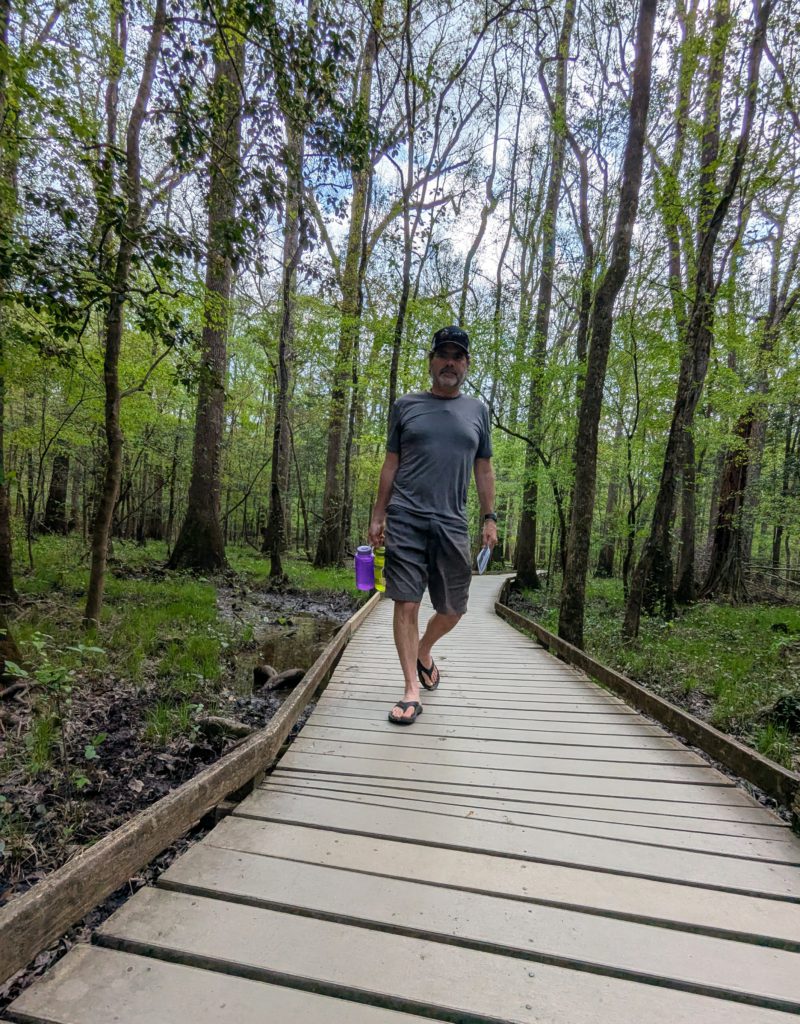
RV Parks & Campgrounds
Park Campgrounds
Inside of Congaree National Park itself, there are no accommodations for any vehicle, RV, or van camping. The only campgrounds within the park are by reservation only and can only accommodate tents or hammocks. These are Longleaf Campground (a walk-in from parking lot) and Bluff Campground (a one-mile hike further). Backcountry camping is also available within park boundaries and is available by wilderness permit only.
Public and Private Campgrounds
Within a 30- to 45-minute drive, you will find several South Carolina state parks and local county parks. Check the Experience Columbia website for private campgrounds in the area that can accommodate RVs and vans.
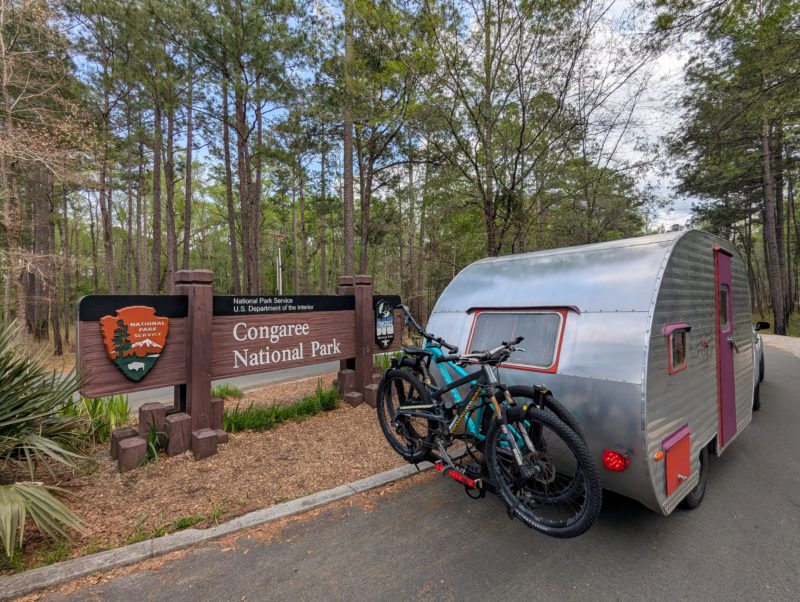
Seasonal Advice
With a humid subtropical climate, Congaree National Park experiences mild winters and very warm, wet summers. The park is accessible in all seasons but is best experienced in the spring and fall when temperatures are at their most comfortable. (And when the insects are generally not a problem.) With that said, this is the only national park we’ve ever seen with a mosquito meter prominently displayed outside the visitor center! If you want to avoid these pesky insects and high humidity, avoid a summertime visit.
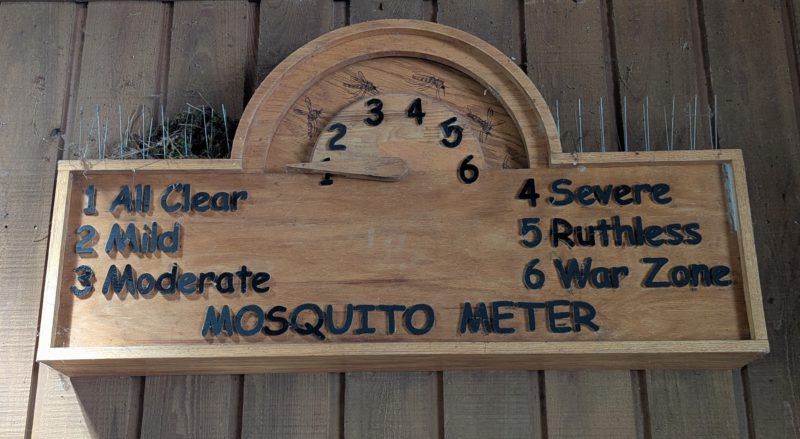
Spring
March to May can be one of the best times to visit the park. Temperatures are generally warm, with average daily highs reaching the mid to upper 70s. Rainfall averages around three inches per month, with insects generally not a problem.
Summer
June to August is normally the hottest and most humid time of the year. Daily temperatures regularly reach into the upper 90s, with high humidity making it feel like it’s 110! Thunderstorms are common and often happen with little or no warning. Precipitation is approximately four and a half inches per month.
Autumn
September to November is also a wonderful time to visit Congaree National Park. Temperatures are in the 70s with low humidity. Fall colors peak between the end of October and early November. Average rainfall is around three inches per month, and water levels are ideal at this time of year for taking a paddling trip on Cedar Creek.
Winter
November to February is mild, with average daytime temperatures reaching the mid 50s, though nighttime temperatures can dip below freezing. Snow is not typical, though it can occur. Flooding is most frequent at this time of the year as the park lies in a huge watershed, so any significant rain in upstate South Carolina can cause a quick rise in water levels.
Unique Programs & Opportunities
Kayaking & Canoeing
Paddling trips are a great way to experience the heart of the park and the Congaree swamp ecosystem! If you are not equipped with your own boat, local outfitters offer guided trips.
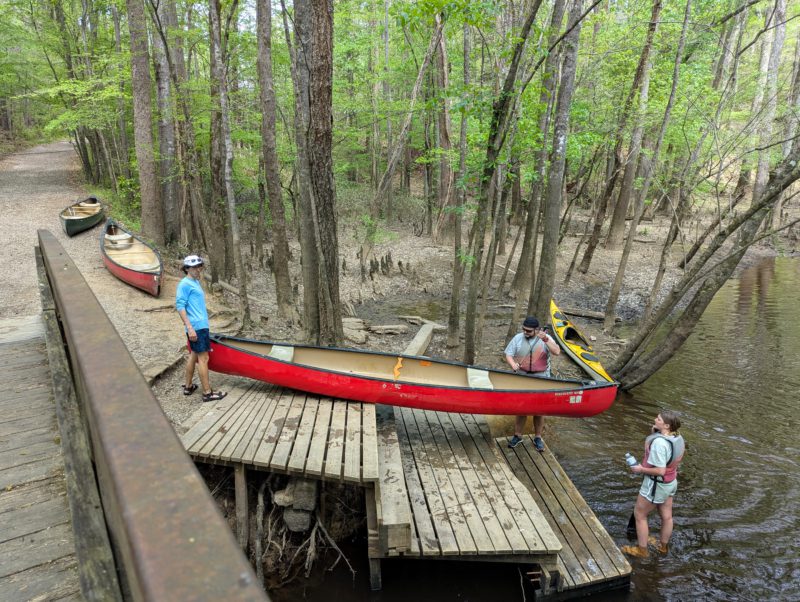
Cedar Creek
This waterway offers boaters various trip options ranging from a few to 20 miles, depending on where you put in and take out (three different designated landings). Some sections can be done as an easy out-back paddle when the current is slow. Longer paddling trips will likely require several portages over downed trees, depending on the water level. You’ll experience swamp life at its best with jumping fish, various snakes curled up in the trees, and a variety of bird life flying through the trees and across the creek. Riverbanks will likely be very muddy and slippery, so caution and appropriate footwear are necessary.
Congaree River Blue Trail
As compared with a creek, this river is a bigger paddle challenge, offering a 50-mile, multi-day experience. The Blue Trail starts in the city of Columbia and ends at Route 601 Landing near the confluence of the Congaree and Wateree, and travels past diverse habitats, offering paddlers the opportunity to see bald eagles, alligators, and a variety of other wildlife.
No designated campsites are provided, but boaters can camp along the river, using the sandbars that are available during times of low water, or backcountry camp (permit required) when they reach river mile 26 within the park. Riverbanks will likely be very muddy and slippery, so caution and appropriate footwear are encouraged.
Fun Facts! Swamps are incredibly important ecosystems! They protect dry lands from excessive flooding, as floodwater is diverted into swamps before reaching dry land and claiming the lives of people and destroying property. Some Baldcypress trees in this region are more than 2000 years old and the forest floor is made up of Dorovan Muck — up to eight feet or a muddy mixture of clay and old leaf debris that filters water by trapping and detoxifying harmful pollutants.
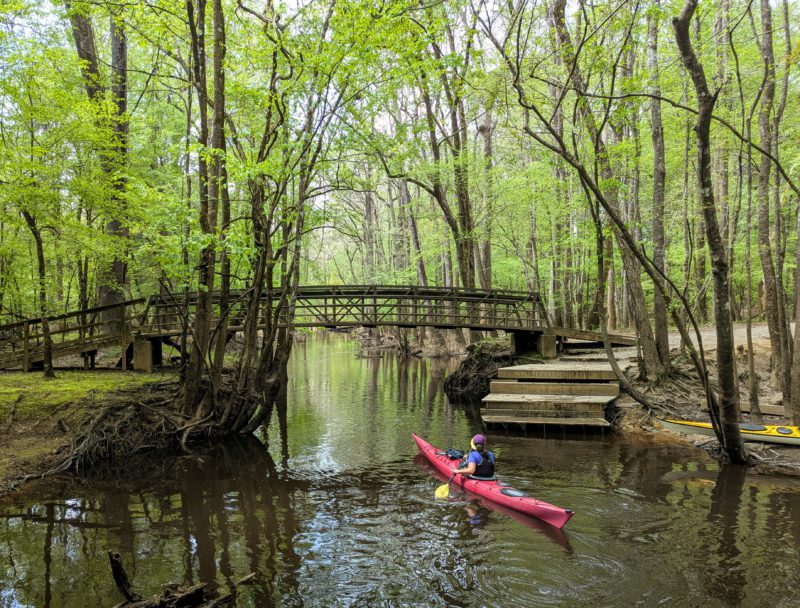
More Outdoor Fun!
Synchronous Firefly Festival
With over 2,000 species of synchronous fireflies worldwide, only three species live in North America. Every year, synchronous fireflies come out for approximately two weeks between mid-May and mid-June. During this time, visitors can experience a fascinating display of synchronous flashing while the fireflies search for a mate. There is an annual lottery for this fascinating phenological event, as it is an extremely popular time to visit the park.
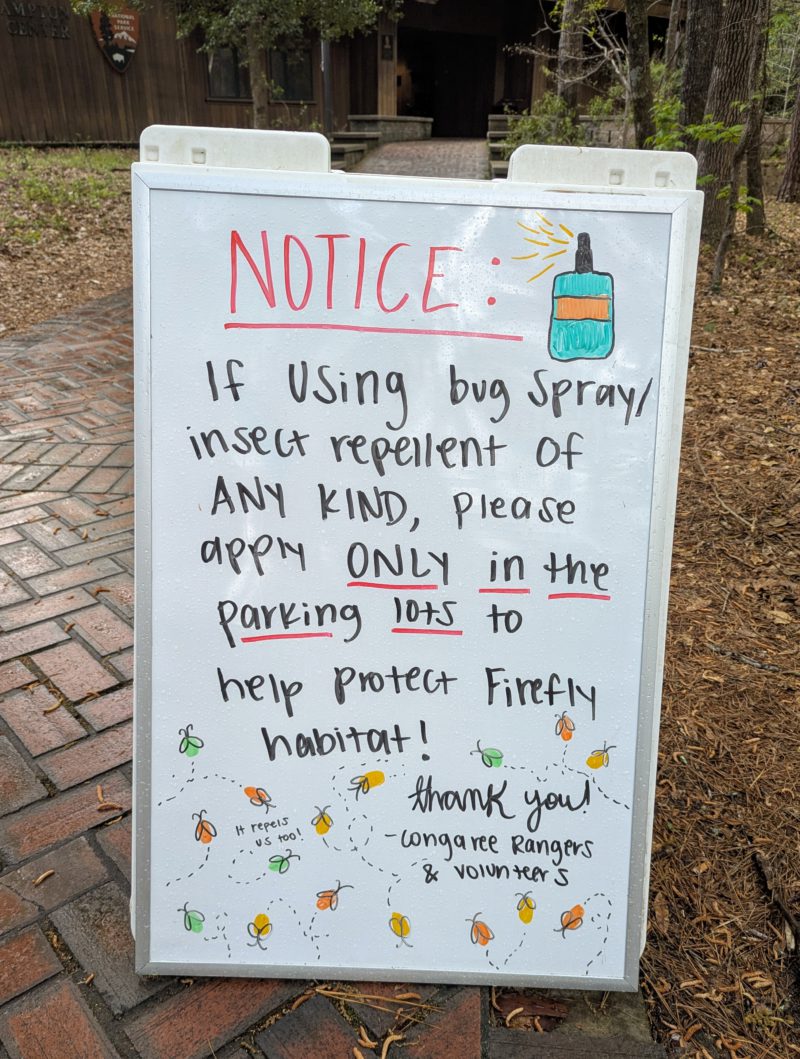
Fishing
Fishing is allowed within the park with a valid South Carolina fishing license. Catch and release is encouraged to preserve the quantity and biodiversity of the fish population. All fishing must be from the shore or nonmotorized boats.
Ranger-Led Programs
Guided walks and talks are a great way to learn about the park. Generally held from November-February, many different programs are offered daily. Check their online calendar for details.

*****
While this unique park is relatively small, there are some fascinating things to see and do. Time your visit wisely, come prepared for whatever nature brings your way. You’ll have a wonderful time exploring this fascinating national park in the heart of the Southeast!
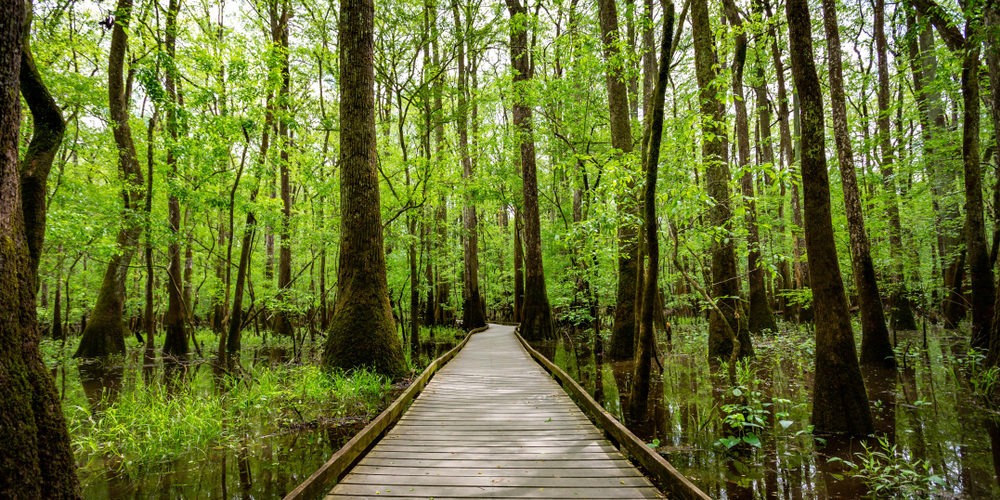
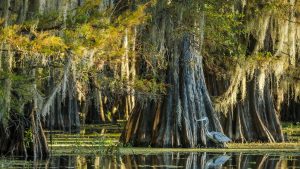
Leave a Reply